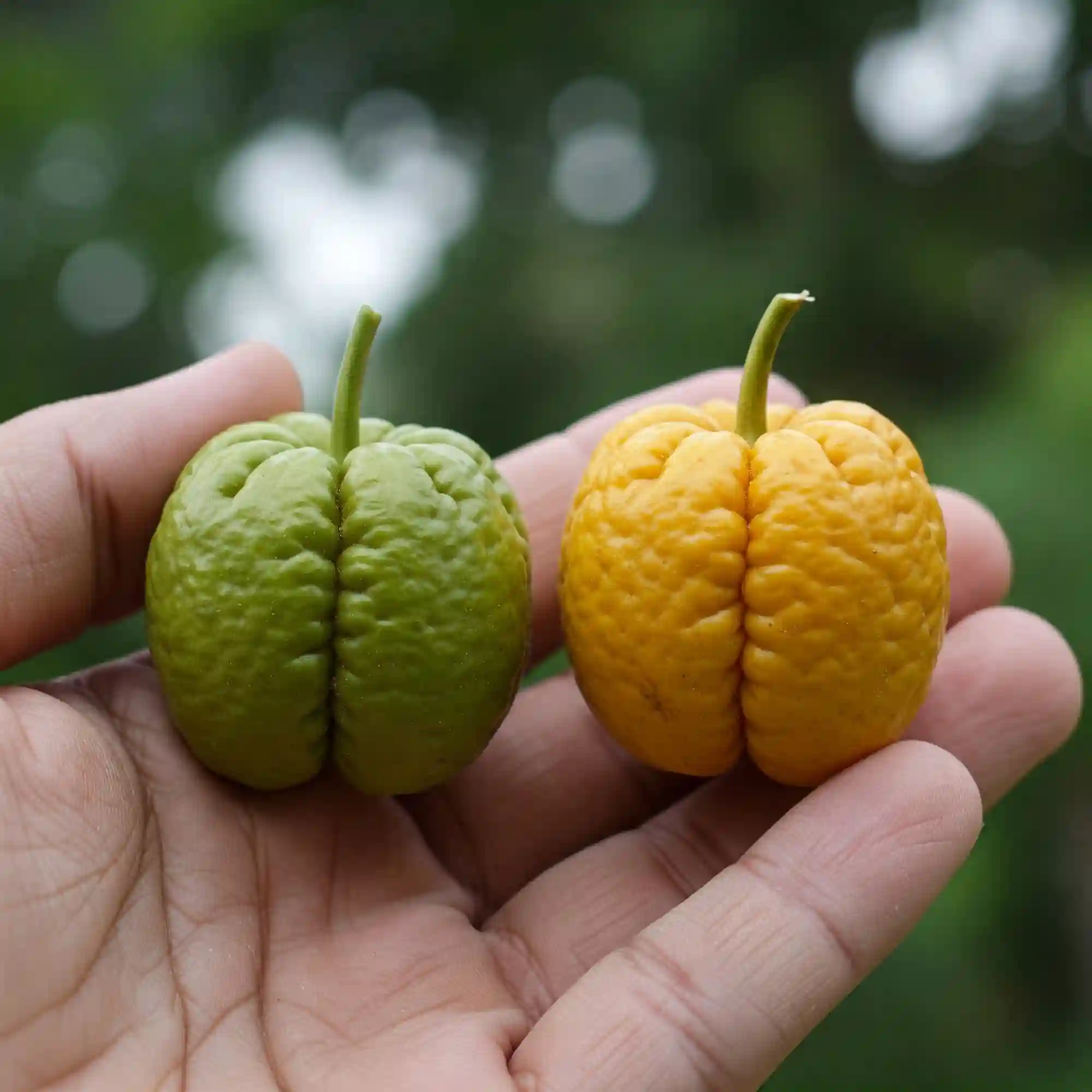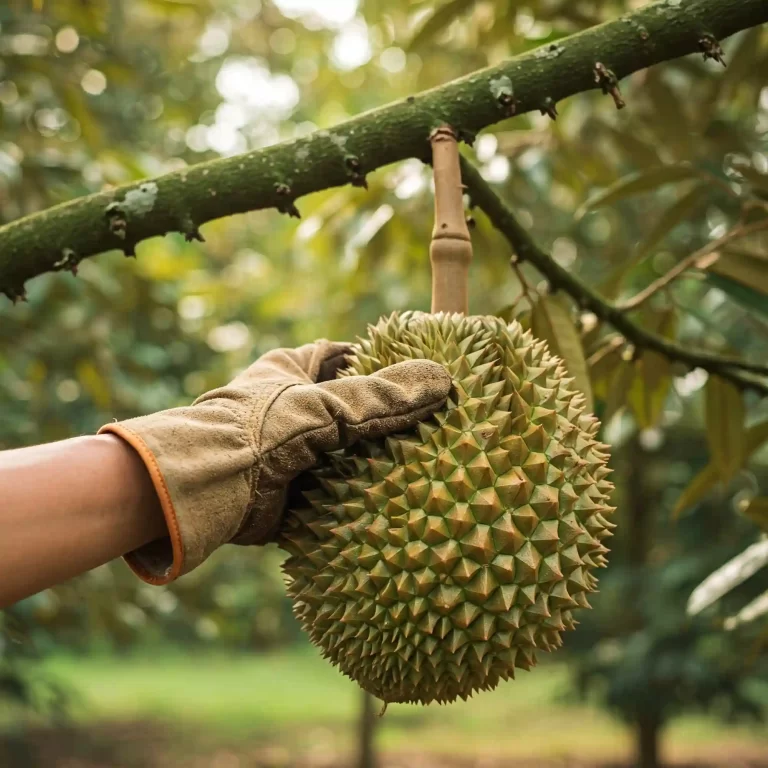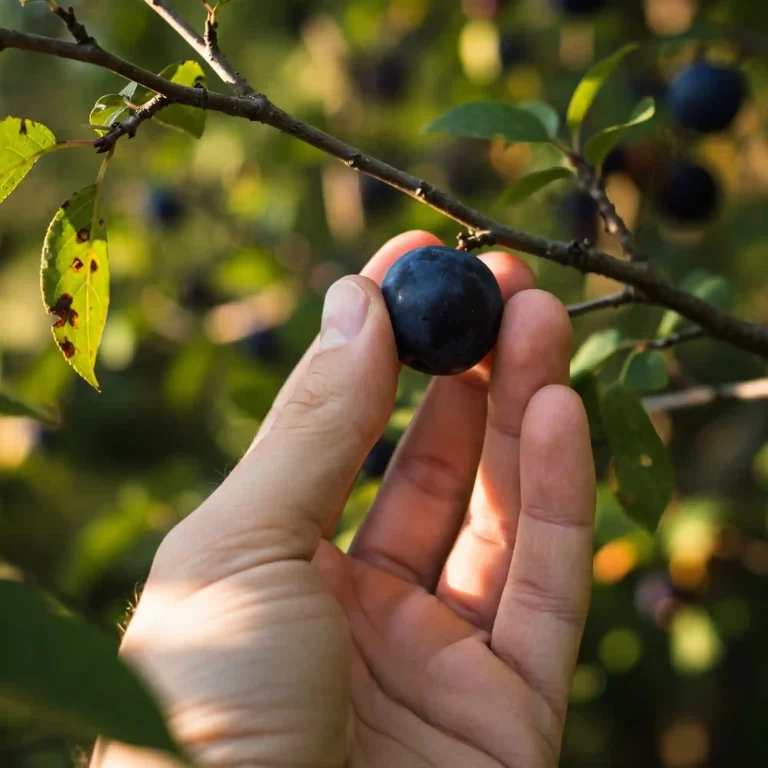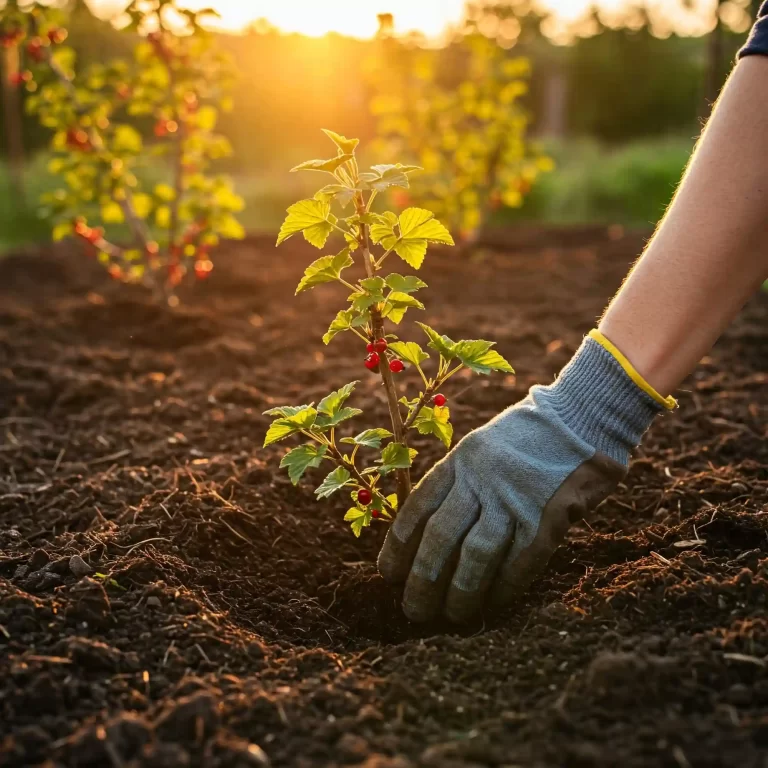You know, there’s something truly special about biting into a sweet, brown Chico fruit, its unique flavor a reminder of tropical climates and home gardens. But perhaps you’ve tried growing them, only to find your tree struggling, or maybe you’re just starting and want to avoid common pitfalls. The frustration of seeing your fruit trees not thriving can be disheartening, especially when you envision the delicious rewards. So, let me tell you, you’re not alone. I’ve spent years learning the ins and outs of growing these beautiful trees, and I’m here to share my knowledge. This guide will provide you with a comprehensive, step-by-step approach to successfully growing Chico fruits in your own backyard, ensuring you enjoy a bountiful harvest.
Understanding Chico Fruit Varieties: Choosing the Right Tree
The world of Chico fruits, also known as sapodilla, is more diverse than you might think. While they all share that characteristically sweet and brown flesh, there are several distinct varieties, each with its own unique flavor profile, size, and ripening time.
One of the most popular varieties is the Brown Select. As the name suggests, this variety produces fruit with a rich, deep brown flesh. It’s known for its exceptional sweetness and juiciness, making it a favorite among many fruit enthusiasts.
Another well-regarded variety is the Ponderosa. As the name implies, this variety produces larger fruits compared to others. The flavor is slightly tangier than the Brown Select, offering a refreshing contrast.
The Tikal variety is renowned for its exceptionally sweet and rich flavor. It’s an early-season variety, which means you can enjoy the fruits earlier in the growing season.
The Makok variety is another popular choice, offering a balance of sweetness and aroma. Its medium-sized fruits are perfect for snacking or incorporating into various culinary creations.
Choosing the Right Variety for Your Needs
Selecting the right Chico fruit variety for your garden depends on several factors. Consider these points:
- Flavor Preferences: Do you prefer sweeter fruits, or do you enjoy a slightly tangier flavor?
- Ripening Time: Do you want to enjoy your harvest early in the season, or are you more flexible?
- Climate: Some varieties are better suited for specific climates.
- Space Availability: If you have limited space, you might want to consider a smaller variety.
By carefully considering these factors, you can choose a Chico fruit variety that will thrive in your garden and provide you with a bountiful harvest of delicious fruits.
For example, if you live in a region with a shorter growing season, you might want to choose an early-ripening variety like the Tikal. On the other hand, if you have limited space, the smaller-sized varieties like the Brown Select or Makok might be more suitable.
Ultimately, the best way to determine the right variety for you is to research and experiment. You can consult with local nurseries or experienced gardeners in your area to get recommendations based on your specific climate and growing conditions.
By understanding the diverse world of Chico fruit varieties, you can make an informed decision and increase your chances of growing a successful and rewarding Chico fruit tree.
Ideal Growing Conditions for Chico Fruit Trees
Chico fruit trees are tropical and subtropical natives, so they thrive in warm climates with ample sunshine. These trees require a minimum of six hours of direct sunlight daily to photosynthesize efficiently and produce a bountiful harvest. In terms of temperature, they prefer a consistent warmth, ideally between 65°F and 90°F (18°C and 32°C). While they can tolerate brief periods of slightly cooler temperatures, prolonged exposure to cold can damage the tree and negatively impact fruit production.
The soil composition is another crucial factor. Chico fruit trees prefer well-draining, fertile soil. Sandy loam soil is often considered ideal as it provides good drainage while still retaining sufficient moisture. It’s essential to avoid planting in heavy clay soils that tend to retain water, as this can lead to root rot, a common problem for Chico trees.
A slightly acidic to neutral soil pH, ranging from 6.0 to 7.5, is generally preferred. You can test your soil’s pH using a simple soil test kit available at most garden centers. If your soil pH is too high or too low, you can amend it by adding appropriate materials like sulfur to lower the pH or lime to raise it.
Importance of Drainage
Adequate drainage is paramount for the health of your Chico fruit tree. Poor drainage can lead to waterlogging, which can suffocate the roots and prevent them from absorbing essential nutrients and oxygen. This can cause root rot, a serious condition that can weaken the tree and even lead to its demise.
To ensure good drainage, you can:
- Avoid planting in low-lying areas where water tends to accumulate.
- Amend heavy clay soil with organic matter like compost or well-rotted manure to improve drainage.
- Create raised beds for planting if necessary.
By providing the ideal growing conditions, you can significantly increase the chances of your Chico fruit tree thriving and producing a bountiful harvest of delicious fruits. Remember, consistent attention to sunlight, temperature, soil quality, and drainage is key to ensuring the health and vitality of your tree.
Planting Your Chico Fruit Tree: A Step-by-Step Guide
Planting your Chico fruit tree is an exciting milestone in your gardening journey. Here’s a step-by-step guide to ensure a successful planting:
1. Selecting the Ideal Location:
- Choose a location that receives ample sunlight, ideally at least six hours of direct sun per day.
- Ensure the chosen spot has well-draining soil to prevent root rot. Avoid areas with poor drainage, such as low-lying areas where water tends to accumulate.
2. Preparing the Planting Hole:
- Dig a hole that is twice as wide as the root ball of the tree and just as deep. This allows for ample space for the roots to spread out and establish themselves.
- If the soil is heavy clay, amend it by adding organic matter like compost or well-rotted manure. This will improve drainage and provide essential nutrients for the tree.
3. Planting the Tree:
- Carefully remove the tree from its container or burlap wrapping.
- Gently place the tree in the center of the planting hole, ensuring that the top of the root ball is level with the surrounding soil. Planting too deep can lead to root rot, while planting too shallow can expose the roots to drying out.
- Backfill the hole with the excavated soil, gently firming it around the roots to eliminate air pockets.
4. Watering Thoroughly:
- After planting, water the tree deeply to settle the soil and ensure good contact between the roots and the soil.
- Continue to water regularly during the establishment phase to keep the soil consistently moist but not waterlogged.
5. Adding Mulch:
- Apply a layer of organic mulch, such as wood chips or shredded bark, around the base of the tree. Mulch helps to retain moisture, suppress weeds, and regulate soil temperature. Keep the mulch a few inches away from the trunk to prevent rot.
Additional Tips
- Consider planting your Chico fruit tree during the spring or fall when the weather is milder.
- If you’re planting multiple trees, ensure they are spaced adequately to allow for proper air circulation and growth.
- Amend the soil with a balanced fertilizer before planting to provide essential nutrients for the tree’s initial growth.
By following these steps and paying close attention to detail, you can ensure a successful planting and set the stage for a healthy and productive Chico fruit tree. Remember, patience is key. It may take several years for your young tree to mature and start producing fruit, but the wait will be worth it when you finally get to savor the sweet rewards of your labor.
Caring for Your Chico Fruit Tree: Essential Tips
Caring for your Chico fruit tree is an ongoing process that involves several key aspects:
Watering:
- Chico fruit trees require consistent moisture, especially during the establishment phase and in dry periods. However, overwatering can lead to root rot, a serious issue for these trees.
- The best practice is to water deeply and infrequently, allowing the top few inches of soil to dry out between waterings. This encourages deeper root growth and helps to prevent waterlogging.
- During the dry season, you may need to increase the frequency of watering. However, always monitor the soil moisture levels and avoid overwatering.
Fertilizing:
- Regular fertilization is essential to provide the nutrients your Chico fruit tree needs for healthy growth and fruit production.
- Use a balanced fertilizer formulated for fruit trees, such as a 10-10-10 or a citrus fertilizer.
- Apply the fertilizer according to the product instructions, typically every 3-4 months during the growing season.
- Avoid over-fertilizing, as this can damage the roots and lead to nutrient imbalances.
Pruning:
- Pruning is an important aspect of Chico fruit tree care. It helps to maintain the tree’s shape, encourage new growth, and improve fruit production.
- The best time to prune your Chico fruit tree is in late winter or early spring, before new growth begins.
- Remove any dead, diseased, or crossing branches.
- You can also prune to shape the tree and control its size. However, avoid heavy pruning, as it can reduce fruit production.
Pest and Disease Control:
- Chico fruit trees can be susceptible to various pests and diseases, including scale insects, mealybugs, root rot, and fungal diseases.
- Regularly inspect your tree for any signs of pests or diseases.
- If you notice any problems, take appropriate action to control the issue. This may involve using organic pest control methods, such as insecticidal soap or neem oil, or applying fungicides according to label instructions.
Additional Tips:
- Mulching around the base of the tree can help to retain moisture, suppress weeds, and regulate soil temperature.
- Protect your tree from extreme weather conditions, such as strong winds or frost.
- Monitor your tree regularly for any signs of stress or distress. Early detection and intervention can help prevent serious problems.
By following these essential care tips, you can ensure your Chico fruit tree remains healthy, productive, and provides you with a bountiful harvest of delicious fruits for years to come. Remember, consistent care and attention to detail are key to cultivating a thriving Chico fruit tree.
Propagating Chico Fruit Trees: Growing from Seed and Other Methods
If you wish to expand your Chico fruit tree collection or share the joy of growing these delicious fruits with others, you can propagate your trees using various methods. While growing from seed is possible, it can be challenging and may result in trees that take longer to bear fruit and may not be true to the parent plant’s characteristics. More reliable methods include air layering and grafting.
Growing from Seed:
- Collecting Seeds: Extract the seeds from ripe Chico fruits. Wash them thoroughly to remove any remaining pulp.
- Seed Preparation: Allow the seeds to dry completely in a well-ventilated area. You can then sow them directly into pots filled with a well-draining seed-starting mix.
- Germination: Keep the pots in a warm, humid environment. Germination can take several weeks or even months.
- Seedling Care: Once the seedlings have developed a few true leaves, transplant them into individual pots and continue to provide them with warmth, moisture, and sunlight.
- Challenges: Growing Chico fruit trees from seed can be challenging. Germination rates can be low, and the resulting trees may not be true to the parent plant’s characteristics. It can also take several years for trees grown from seed to start producing fruit.
Air Layering:
- Select a Branch: Choose a healthy, mature branch on your Chico fruit tree.
- Make an Incision: Make a ring of cuts around the branch, removing a small section of bark.
- Apply Rooting Hormone: Apply a rooting hormone powder to the exposed area.
- Wrap with Moss: Wrap the exposed area with moist sphagnum moss and secure it with plastic wrap to maintain humidity.
- Root Development: After a few months, roots should develop within the moss.
- Sever and Pot: Once the roots have formed, carefully sever the branch below the rooted area and pot it in a well-draining potting mix.
Grafting:
- Grafting: This method involves joining a scion (a cutting from a desired variety) to a rootstock (a seedling or young tree).
- Success Rate: Grafting requires skill and practice but can be a successful method for propagating Chico fruit trees.
Tips for Successful Propagation:
- Maintain consistent moisture levels during the propagation process.
- Provide adequate sunlight and warmth to encourage root development.
- Be patient, as propagation can take several months or even years.
- If you are new to propagation, consider starting with air layering, as it is generally easier than grafting.
By understanding these propagation methods, you can expand your Chico fruit tree collection and share the joy of growing these delicious fruits with others. Remember, patience and careful attention to detail are key to successful propagation.
Harvesting and Enjoying Your Homegrown Chico Fruits
The anticipation of harvesting the fruits of your labor is one of the greatest rewards of growing your own Chico fruit tree. Knowing when to harvest and how to handle the fruits is essential to ensure you enjoy their full flavor and sweetness.
Determining Ripeness:
Chico fruits typically ripen during the fall and winter months. However, the exact timing can vary depending on the variety and your specific climate. Here are some visual cues to help you determine when your Chico fruits are ripe:
- Color: The skin of ripe Chico fruits will turn a deep brown, almost chocolate-like color.
- Texture: Ripe fruits will feel slightly soft to the touch, similar to a ripe avocado.
- Aroma: Ripe Chico fruits often emit a subtle sweet fragrance.
Harvesting Techniques:
- Gentle Handling: When harvesting, it’s crucial to handle the fruits gently to avoid bruising or damaging them.
- Use a Fruit Picker: A fruit picker can help you reach higher branches and minimize damage to the tree.
- Harvesting Frequency: Harvest fruits as they ripen to ensure optimal flavor and prevent over-ripening.
Storing and Enjoying Your Harvest:
- Proper Storage: Ripe Chico fruits can be stored at room temperature for a few days. For longer storage, you can refrigerate them, but note that refrigeration can slightly alter their flavor.
- Eating Fresh: Chico fruits are best enjoyed fresh. They can be eaten out of hand or used in various culinary creations.
- Culinary Uses: Chico fruit can be used in various ways:
- Fresh: Enjoy them as a refreshing snack or add them to fruit salads.
- Smoothies: Blend them into smoothies for a tropical twist.
- Desserts: Use them to make chutneys, jams, or even ice cream.
- Culinary Creations: Chico fruit can be used in savory dishes as well. Try adding them to salsas or using them as a topping for grilled meats.
Here are some delicious ways to enjoy your homegrown Chico fruits:
- Chico Fruit Salad: Combine diced Chico fruit with other tropical fruits like mango, pineapple, and papaya. Drizzle with honey or lime juice for added flavor.
- Chico Fruit Smoothie: Blend frozen Chico fruit with yogurt, milk, and a touch of honey or maple syrup for a refreshing and nutritious smoothie.
- Grilled Chicken with Chico Fruit Salsa: Make a salsa with diced Chico fruit, red onion, cilantro, and lime juice. Serve it over grilled chicken or fish for a burst of flavor.
By following these tips, you can enjoy the fruits of your labor and savor the deliciousness of your homegrown Chico fruits. Remember, patience and proper care are key to a successful harvest. So, get out there, plant your tree, and enjoy the journey of growing your own tropical fruit paradise!
Troubleshooting Common Challenges: Dealing with Pests, Diseases, and Other Issues
While growing Chico fruit trees is generally rewarding, you might encounter some challenges along the way. Here are some common issues and how to address them:
Pest Problems:
- Scale Insects: These tiny insects attach themselves to the branches and leaves, sucking sap from the tree and hindering growth. You can identify them by their hard, shell-like coverings.
- Mealybugs: These soft-bodied insects produce a white, cottony substance that can be seen on leaves and branches. They also suck sap from the tree.
- Controlling Pests: You can control these pests using organic methods such as insecticidal soap or neem oil. Apply these treatments according to the product instructions, making sure to cover all parts of the tree thoroughly.
Diseases:
- Root Rot: This fungal disease occurs when the soil remains waterlogged for extended periods. It can cause the roots to rot, leading to wilting, yellowing leaves, and eventually, tree death.
- Fungal Leaf Diseases: Various fungal diseases can affect Chico fruit trees, causing leaf spots, blights, or leaf drop.
- Managing Diseases: To prevent root rot, ensure your tree is planted in well-draining soil and avoid overwatering. For fungal diseases, you can use fungicides according to label instructions. Good sanitation practices, such as removing and disposing of infected leaves and branches, can also help to prevent the spread of diseases.
Other Issues:
- Nutrient Deficiencies: Nutrient deficiencies can cause various symptoms, such as yellowing leaves, stunted growth, and reduced fruit production. Regular fertilization with a balanced fertilizer can help to prevent nutrient deficiencies.
- Environmental Stress: Extreme weather conditions, such as drought or excessive rainfall, can stress the tree and negatively impact its health and productivity. Providing adequate irrigation during dry periods and protecting the tree from strong winds or frost can help mitigate environmental stress.
Early Detection and Prevention:
Regularly inspecting your Chico fruit tree for signs of pests, diseases, or other issues is crucial for early detection and timely intervention. Early detection and treatment can prevent minor problems from escalating into major ones.
By being proactive and addressing these challenges promptly, you can ensure the health and vitality of your Chico fruit tree and continue to enjoy the rewards of your gardening efforts. Remember, a healthy tree is more likely to produce a bountiful harvest of delicious fruits.
FAQ
Here are some frequently asked questions about growing Chico fruits:
Q: Can I grow Chico fruit trees in containers?
A: Yes, you can grow Chico fruit trees in large containers. However, container-grown trees may not produce as much fruit as those planted in the ground. You’ll need to choose a large, deep container and ensure it has adequate drainage. Regular fertilization and watering are essential for container-grown trees.
Q: How long does it take for a Chico fruit tree to start producing fruit?
A: It typically takes several years for a Chico fruit tree to start producing fruit, usually 3-5 years or even longer. The time to first fruit production can vary depending on the variety, growing conditions, and propagation method.
Q: Are there any specific pollinators required for Chico fruit trees?
A: While some Chico fruit varieties are self-pollinating, cross-pollination between different trees can often improve fruit set. Planting multiple varieties can increase fruit production. However, it’s not always necessary to have multiple trees for a successful harvest.
Q: Can I eat the seeds of a Chico fruit?
A: Chico fruit seeds are generally not edible. They may contain small amounts of a toxic substance. It’s best to avoid consuming the seeds.
By addressing these frequently asked questions, you can provide valuable information to your readers and help them navigate the process of growing Chico fruit trees with confidence.
Conclusion
Growing your own Chico fruit trees is a rewarding experience. It allows you to connect with nature, cultivate delicious and nutritious fruits, and enjoy the satisfaction of nurturing a living thing. By following the tips and guidelines outlined in this guide, you can increase your chances of success and reap the benefits of a healthy and productive Chico fruit tree.
Remember, patience is key. It may take several years for your young tree to mature and start producing fruit. However, the wait will be well worth it when you finally get to savor the sweet taste of your homegrown Chico fruits.
I encourage you to share your experiences with growing Chico fruits with others. Whether it’s sharing your successes, troubleshooting challenges, or simply enjoying the process together, connecting with other gardeners can be a valuable experience.
I hope this guide has inspired you to embark on your own Chico fruit growing journey. Happy gardening!
Additional Tips:
- Join local gardening communities or forums: Connect with other gardeners who share your passion for growing fruit trees. You can learn from their experiences, share your own insights, and get support along the way.
- Keep a garden journal: Document your journey, including planting dates, care routines, and observations about your tree’s growth and development. This can be a valuable resource for future reference and a rewarding way to track your progress.
- Embrace the learning process: Growing fruit trees is an ongoing learning experience. Don’t be afraid to experiment, make mistakes, and learn from your experiences.
By following these tips and embracing the journey, you can cultivate a thriving Chico fruit tree and enjoy the delicious rewards for years to come. Happy gardening!




